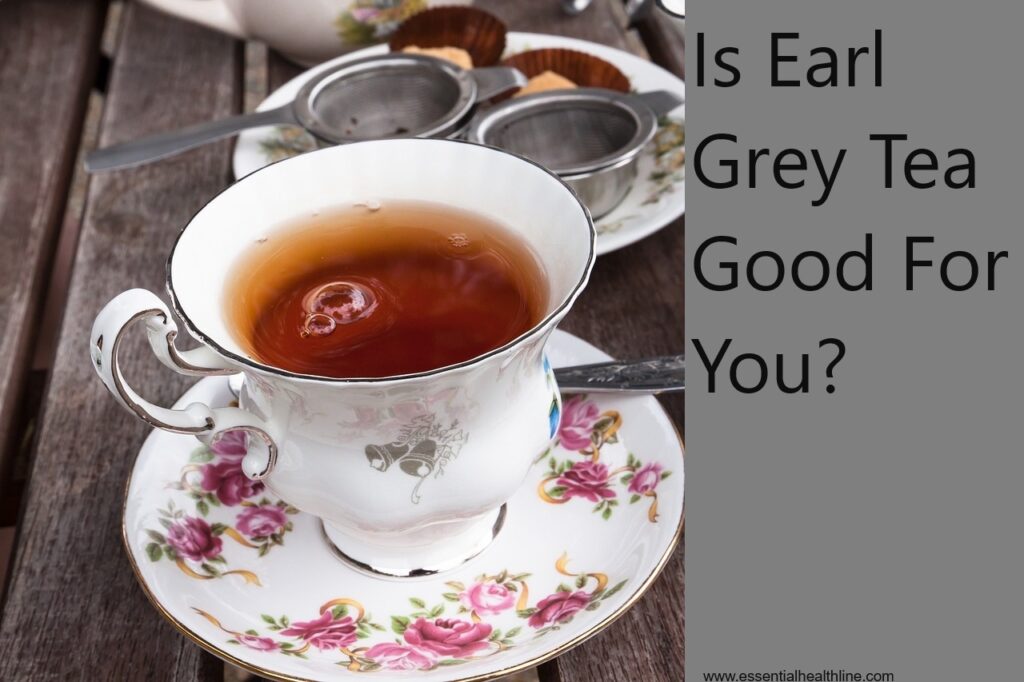Bergamot tea, commonly known as Earl Grey Tea, is a historical brew made by mixing black tea with dried bergamot orange extracts.
Earl Grey tea was named after British Prime Minister Charles Grey, who ruled in the 19th century. Though adding bergamot was a way of concealing the poor quality of tea and providing a citrusy flavor, Earl Grey tea was highly associated with aristocracy.
But are there any health benefits of Earl Grey tea?
Since Bergamot fruits have anti-inflammatory and antioxidant properties, we have no doubts adding these citrus fruit skin to your black tea can help lower the risk of metabolic syndrome.
In addition, Earl Grey tea may also effectively lower cholesterol levels, relieve pain, and improve heart health.
Keep reading to know what happens after taking black tea with the addition of bergamot oil.
Health Benefits of Earl Grey Tea
There are more health benefits of lavender tea than of Earl Grey tea. Since it is low in nutrients and minerals, it may not offer many health benefits like lemon tea or cactus water.
However, Earl Grey tea is still a great morning treat as it has some beneficial nutrients.
Some nutrients in Earl Grey tea include folic acid, iron, riboflavin, potassium, and magnesium.
The tea is also rich in various antioxidants that benefit your health, for example, flavonoids, which help relieve inflammation. However, the health benefits of Earl Grey tea may also vary based on the available Earl Grey blends.
Even so, Earl Grey teas’ most common health benefits include.
Helps in the Digestion of Food
One powerful antioxidant in Earl Grey tea is flavonoids. These antioxidants ease inflammation caused by digestion problems.
A study involving mice suffering from inflammatory bowel disease (IBD) called colitis confirmed that bergamot juice helped lower diarrhea episodes. Besides, it is also rich in proteins that help with inflammation.
What’s more? The juice may also aid with intestinal inflammation.
Though no study involves humans, animal and test-tube studies show that bergamot juice could also help fight problems associated with pains and stomach ulcers, such as H. pylori bacteria.
Improves Heart Health
Since bergamot is rich in flavanones, it can help lower cholesterol levels. Why? Flavanones discourage the production of enzymes that boost cholesterol production in your body.
So, one of Earl Grey tea’s most amazing health benefits is lowering LDL cholesterol after about 6 months of daily intake. Still, bergamot extracts help in lowering triglycerides blood levels.
This also means that Earl Grey tea could help prevent high blood pressure. Compared to placebo, black tea lowered blood pressure in patients who took at least 3 cups every day for 6 months.
So, if you want to enjoy more health benefits of iced tea, add dry bergamot rind.
Aids in Weight Loss
Since bergamot extracts added to the tea lower cholesterol levels, Earl Grey tea can reduce weight and decrease the risk of coronary heart diseases.
Besides, bergamot extracts also boost lipid metabolism. Consider taking Early Grey tea if you’re looking for simple ways to reduce your waist circumference.
Keeps You Hydrated
Keeping your body hydrated is essential as it keeps the body’s system functioning properly.
Some problems, such as headaches, could disappear just by taking a cup of tea spiced with bergamot extract.
So, if drinking plain water is not your thing, drink Earl Grey tea; the citrus extracts will also boost your oral health.
Helps to Detox the Body
Since black tea leaves and bergamot extracts have powerful antioxidants, Earl Grey Tea can eliminate free radicals. When you get rid of free radicals, your body easily detoxifies and stops or prevents the growth of cancer cells.
What Are the Side Effects of Too Much Bergamot?
There is a compound found in Earl Grey Tea that hinders the absorption of potassium. This compound causes blurred vision and muscle cramps. So, tea lovers should go slow on Earl Grey Tea.
However, this only happens when you take about 16 cups of bergamot tea or more. Not to mention, since black bergamot tea has caffeine content, consuming it in large amounts could also cause adverse effects such as anxiety and jitters.
Thankfully, these side effects cease once you stop taking too much bergamot tea daily.
A cup of tea a day will not harm you.
How Is Bergamot Tea Made?
To make Earl Grey tea with a unique flavor, you need
- Hot water
- Loose-leaf tea or tea bags
- Rind of the bergamot orange/oil of bergamot
Besides, it takes only a few minutes to prepare this flavored tea.
Follow the steps below.
- Boil water and add one tea bag.
- Brew your tea at a temperature of 150 to 180F. However, if you’re using a black tea base, use temperatures of about 200 to 212 F to obtain excellent flavor.
- Pour the tea into a cup of dry bergamot rinds and allow a few minutes to steep for a better flavor.
- Strain the tea and take it while hot.
It would help, especially for heavy tea drinkers, to avoid sugar to prevent tooth decay.
Parting Shot
Most people are yet to know the health benefits of Earl Grey tea because they have not taken it, probably because of associating it with poor-quality tea!
Besides giving you a calming effect due to stress relief after taking a warm cup of Earl Grey tea, it plays an important role in your body; for example, it helps lower bad cholesterol and hydrates your body.
Besides boosting your immune system, other Earl Grey tea benefits include helping you lose weight, detoxing your body, and strengthening your digestive system.
Regardless of the black tea blends you buy, adding a rind of a bergamot orange, the key ingredient, could make all the difference.
Nevertheless, though Earl Grey Tea is the best tea, it is high in caffeine if made of tea leaves. So, take only a few cups a day to minimize caffeine intake.



